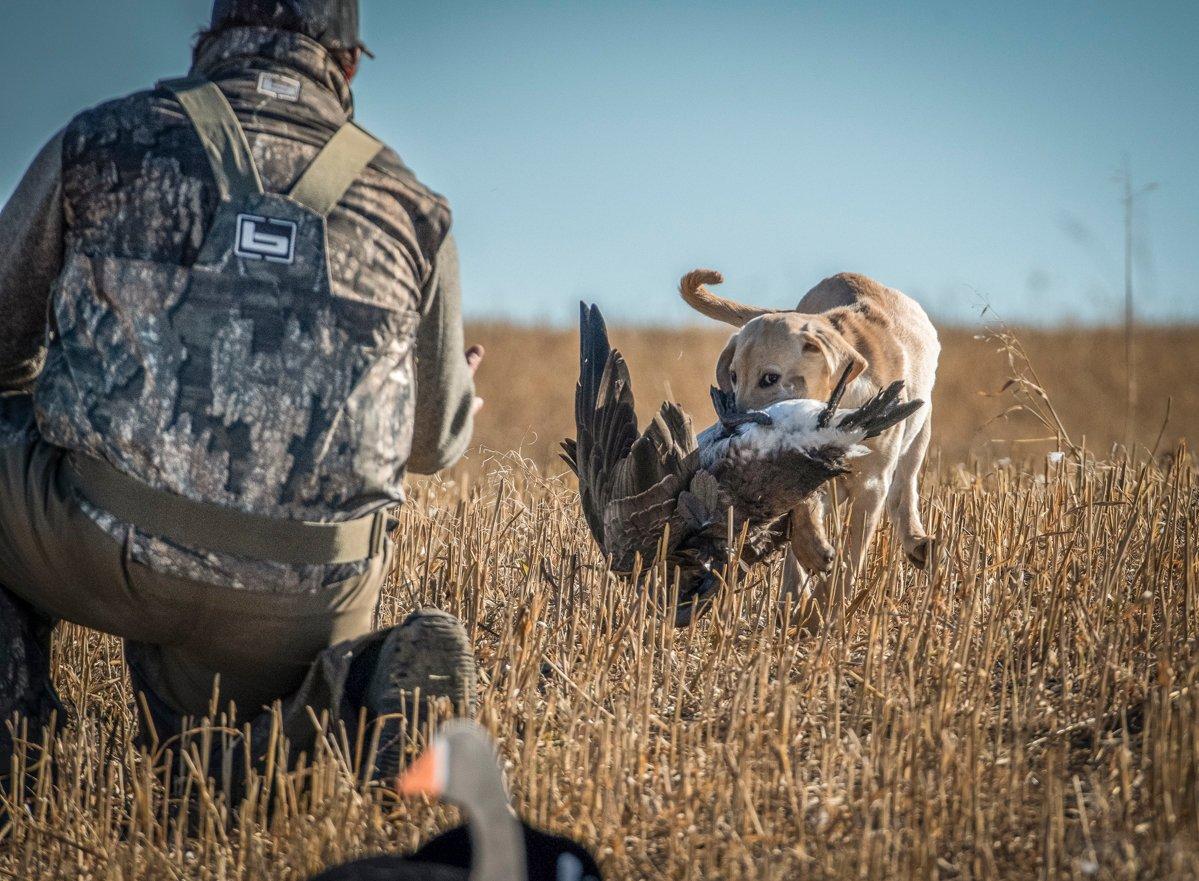An outfitter shares his best advice for hunting late-summer honkers
It's an hour before dawn, with stars twinkling in the sultry September air, and we're lugging full-body decoys and silhouettes through some Minnesota wheat stubble. Sweat pours. Mosquitoes attack. But we brush in blinds, crawl inside, and wait for light. It comes, and we wait some more. I doze a little bit. Isn't it breakfast time, geese?
Finally, they appear, winging over a distant tree line and banking toward us. Oh yes. Man, this is a lot of work, but now it's worth it as wings set and clammy palms clutch shotguns in the late-summer air.
Early goose seasons bring challenges, but they also provide rewards. That hunt, one of my first for summertime geese long ago, turned out pretty good, but I'm always trying to get better. Hard work pays off, but so does using proven strategies, techniques, approaches and tips. Where better to turn than a seasoned goose guide?
To put more honkers on the ground this year, I turned to Bret Amundson of Mid-Migration Outfitters. Hailing from western Minnesota, Amundson works there and in the Dakotas on the goose trail in spring (for snow geese), fall and winter. Here are some of his insights for hunting early-season Canada geese.
It's Never Too Early to Scout
Start scouting now, Amundson said. Don't wait until the night before opening day to begin looking for birds. That's too late. Every time I drive somewhere, I'm searching for the type of fields that geese will be using once they start leaving the water.
Wheat fields are obvious targets. Other small grains — such as oats, milo, barley and peas — can be hot, too. Don't forget alfalfa fields that have been cut in late summer or early fall and are sprouting new greens.
Find Water
Early-season Canadas aren't too interested in flying long distances for food, so start near water.
If you're going to a new area, it's simple and smart to spend some time scouting on Google Maps to search out areas with water, Amundson said. That will help you spend less windshield time finding pockets of geese.
Don't Go for the Gold
Don't worry about finding a 500-bird feed, Amundson said. Some of my best early-season hunts have been places with 80 to 100 birds. But sometimes, you might only find 50 or so strung out across an entire field. That can work just fine, depending on how big of a group you have. There might be five or six family groups that could be coming from different roosts.
If you put them to bed — as in, you watch where they go at the end of the day to roost — you might be able to see how many groups there are, and they might come that way in the morning. Five or six small flocks coming into the spread can make for a fun hunt.
Sweat the Details
Even if the geese aren't very experienced, your hide is still critical, Amundson said. Small grain fields such as wheat, oats or peas can be very tough to hide in. We'll normally search for a field edge and put layouts out or use an A-frame. Transition edges with tall grass or even shelterbelts can provide enough cover. Just plan for the wind and landing areas accordingly.
Put Pockets in the Decoys
Decoy placement must be natural, Amundson said. Because early-season geese tend to hang in small family groups, they don't always land together. Make a realistic spread of small groups with pockets between them. You don't have to throw out an entire trailer full of decoys, either. Some hunters like big spreads all the time, but I don't think big numbers are necessary right at the beginning of the season.
Go Light on the Calling
Amundson said early-season goose hunters shouldn't overcall.
One of the biggest mistakes I see early in the year is too much calling, he said. The brainpower of young geese is limited, and it doesn't take much to fool them. Get their attention, and use your call to guide them in, but don't try to win the worlds during late August and early September in the decoy spread.
Remember: Mama and papa goose are probably still around.
Get Creative
Geese don't read articles like this on how to shoot geese. Do what you need to shoot them.
We use early-season birds to try out new spots, new decoys or weird hides, Amundson said with a laugh. We've shot piles of birds over all silhouettes. We'll hunt flooded bean spots or other transition-water areas where birds aren't roosting. When you don't have big numbers of migrating birds to pattern, you might have to get unconventional. Early-season geese will use non-traditional areas to eat or drink if their regular food sources aren't ready.
Adjust
Don't just wait and hope.
Watch what the first flock coming in does, Amundson said. If they flare, they probably saw you. Clean up your hide. If they land off to the side of your spread, you might need to open up your hole or pocket more. If the wind changes, moving decoys might be a necessity.
It's worth saying again: Don't just wait and hope. Do something to adjust and get better.
Remain Patient
At the same time, though, you do have to have some patience, Amundson said.
Maybe they're just lazy that day and not flying yet.
If you're confident in your concealment, your decoy spread looks convincing and your calling is spot-on, it could just be the unpredictability of wild birds, Amundson said. The next flock might do it perfectly.
Knowing when to stand pat and when to make a change is an age-old trick.
Limit Your Flagging
You might not even need to use a flag during the early season, Amundson said but if you do, only use it when birds aren't working right. If they're locked and coming straight at you, why flag? You're only risking getting busted. Keep it simple.
Get some attention, and then stow the flag.
Early Aces
Remember these tips when you hunt early-season geese this year. With luck, you'll forget about the heat and mosquitoes and marvel at the honkers hovering over your decoys.
Click here for more Realtree waterfowl hunting content. And check us out on Facebook.








